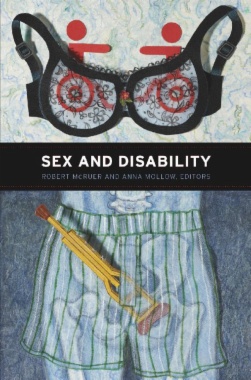The title of this collection of essays, Sex and Disability, unites two terms that the popular imagination often regards as incongruous. The major texts in sexuality studies, including queer theory, rarely mention disability, and foundational texts in disability studies do not discuss sex in much detail. What if "sex" and "disability" were understood as intimately related concepts? And what if disabled people were seen as both subjects and objects of a range of erotic desires and practices? These are among the questions that this collection's contributors engage. From multiple perspectives—including literary analysis, ethnography, and autobiography—they consider how sex and disability come together and how disabled people negotiate sex and sexual identities in ableist and heteronormative culture. Queering disability studies, while also expanding the purview of queer and sexuality studies, these essays shake up notions about who and what is sexy and sexualizable, what counts as sex, and what desire is. At the same time, they challenge conceptions of disability in the dominant culture, queer studies, and disability studies.
Contributors. Chris Bell, Michael Davidson, Lennard J. Davis, Michel Desjardins, Lezlie Frye, Rachael Groner, Kristen Harmon, Michelle Jarman, Alison Kafer, Riva Lehrer, Nicole Markotić, Robert McRuer, Anna Mollow, Rachel O’Connell, Russell Shuttleworth, David Serlin, Tobin Siebers, Abby L. Wilkerson
- Contents
- Acknowledgments
- Introduction / Anna Mollow and Robert McRuer
- Part I: Access
- 1. A Sexual Culture for Disabled People / Tobin Siebers
- 2. Bridging Theory and Experience: A Critical-Interpretive Ethnography of Sexuality and Disability / Russell Shuttleworth
- 3. The Sexualized Body of the Child: Parents and the Politics of “Voluntary” Sterilization of People Labeled Intellectually Disabled / Michel Desjardins
- Part II: Histories
- 4. Dismembering the Lynch Mob: Intersecting Narratives of Disability, Race, and Sexual Menace / Michelle Jarman
- 5. “That Cruel Spectacle”: The Extraordinary Body Eroticized in Lucas Malet’s The History of Sir Richard Calmady / Rachel O’Connell
- 6. Pregnant Men: Modernism, Disability, and Biofuturity / Michael Davidson
- 7. Touching Histories: Personality, Disability, and Sex in the 1930s / David Serlin
- Part III: Spaces
- 8. Leading with Your Head: On the Borders of Disability, Sexuality, and the Nation / Nicole Markotić and Robert McRuer
- 9. Normate Sex and Its Discontents / Abby L. Wilkerson
- 10. I’m Not the Man I Used to Be: Sex, HIV, and Cultural “Responsibility” / Chris Bell
- Part IV: Lives
- 11. Golem Girl Gets Lucky / Riva Lehrer
- 12. Fingered / Lezlie Frye
- 13. Sex as “Spock”: Autism, Sexuality, and Autobiographical Narrative / Rachael Groner
- Part V: Desires
- 14. Is Sex Disability?: Queer Theory and the Disability Drive / Anna Mollow
- 15. An Excess of Sex: Sex Addiction as Disability / Lennard J. Davis
- 16. Desire and Disgust: My Ambivalent Adventures in Devoteeism / Alison Kafer
- 17. Hearing Aid Lovers, Pretenders, and Deaf Wannabes: The Fetishizing of Hearing / Kristen Harmon
- Works Cited
- Contributors
- Index

